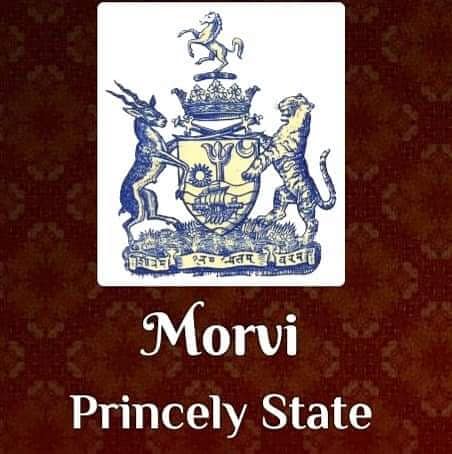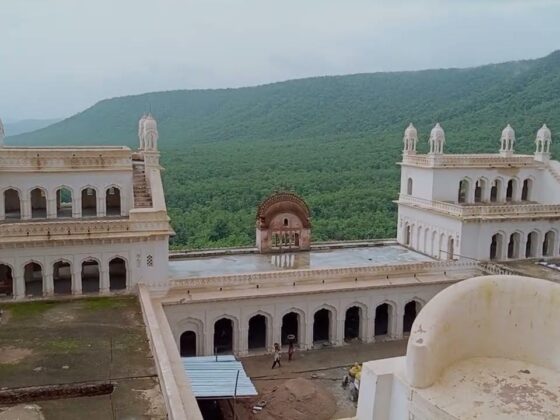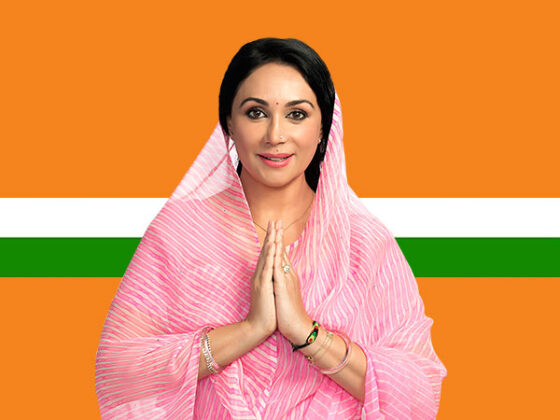The Legacy of Morvi Princely State: A Historic Jewel of Gujarat

Introduction
The Morvi Princely State stands as a testament to Gujarat’s royal grandeur. Established as a significant princely state under British India, Morvi flourished due to its progressive rulers, rich cultural heritage, and architectural marvels. The state played a crucial role in Gujarat’s history and remains a focal point of heritage and tourism today.
Origins and Foundation of Morvi Princely State
Morvi, also spelled Morbi, was a princely state in the Kathiawar region of Gujarat. The Jadeja Rajputs, known for their valor and administrative acumen, established their rule in Morvi in the late 17th century. Rao Bharmalji I, the first prominent ruler, laid the foundation of the state, which expanded over time through strategic alliances and military conquests.
Morvi’s geographical location on the banks of the Machchhu River contributed to its economic growth and trade. The region developed as a hub for commerce, art, and culture, attracting merchants and craftsmen from across India.
The Rule of the Jadeja Dynasty
The Jadeja rulers governed Morvi with a blend of traditional values and progressive reforms. Among the most notable rulers was Rao Waghji Thakor, who played a vital role in modernizing the state. His contributions included infrastructural development, the establishment of educational institutions, and administrative improvements.
During the 19th century, Morvi came under British suzerainty but maintained internal autonomy. The rulers efficiently managed governance, ensuring stability and prosperity for their subjects.
The Contributions of Morvi’s Rulers
The Maharajas of Morvi were known for their forward-thinking initiatives. Some of their key contributions include:
- Infrastructure Development: The state saw the construction of well-planned roads, bridges, and public buildings. The Morvi Railway was one of the pioneering projects that enhanced connectivity within Gujarat.
- Education Reforms: Schools and colleges were established to provide quality education. The rulers encouraged literacy and learning, making Morvi a center for academic progress.
- Cultural Advancements: The royal family patronized art, music, and architecture. Temples, palaces, and public halls were built, showcasing exquisite craftsmanship.
- Industrial Growth: Morvi became known for its ceramic industry and engineering enterprises. The legacy of industrial innovation continues today, with Morvi being a leading producer of tiles and ceramics in India.
The British Era and Independence
Like other princely states, Morvi was under British rule but enjoyed autonomy in governance. The rulers collaborated with the British administration, ensuring law and order while fostering economic growth.
When India gained independence in 1947, the princely states had to integrate into the Indian Union. In 1948, Morvi joined the newly formed Republic of India, merging with the state of Saurashtra, which later became part of Gujarat. This transition marked the end of royal rule but not the decline of Morvi’s legacy.
Architectural Marvels of Morvi
Morvi is home to several architectural wonders that reflect its regal past. Some of the most famous landmarks include:
- Mani Mandir: A breathtaking temple built by Thakor Sahib Sir Waghji, showcasing intricate carvings and artistic brilliance.
- Darbar Gadh: The royal palace, a fusion of European and Indian architectural styles, stands as a testament to the opulence of the Morvi rulers.
- Wellingdon Secretariat: A grand administrative building constructed during British rule, symbolizing Morvi’s governance excellence.
These monuments continue to attract historians, architects, and tourists, preserving the state’s heritage for future generations.
Morvi’s Influence on Modern Gujarat
Even after its merger into India, Morvi has maintained its influence. The city is now a thriving industrial and cultural hub, known for its tile industry, educational institutions, and historical sites. The descendants of the royal family remain respected figures in Gujarat’s social and cultural spheres.
Morvi’s legacy extends beyond its past, shaping Gujarat’s identity with its economic contributions and historical significance. The state’s commitment to progress and preservation continues to inspire generations.
Conclusion
The Morvi Princely State represents a glorious chapter in Gujarat’s history. Its rulers’ vision, administrative prowess, and cultural contributions created a legacy that endures. From architectural brilliance to economic growth, Morvi remains a symbol of royal heritage and progress.
As India moves forward, Morvi stands as a bridge between the past and the present, reminding us of the grandeur, resilience, and legacy of the princely states that once defined the subcontinent.








